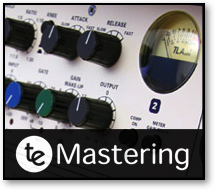




These production tips and tricks are designed to help you make the most of your music. Covering everything from mic technique to post-production, we hope you find them useful.
If there’s a topic you’d particularly like to see covered then please feel free to get in touch




Industry news, useful links and what’s going on at Tenth Egg
© Tenth Egg Productions 2007




A different approach to music production.

music mastering

Tips and tricks from our engineers to help you with your music making


Often the guitar sound can make or break a track and it certainly plays a crucial role in setting the tone or feel of your average indie / rock song. Generally you can't go far wrong with the mic in front of the amp approach, but you need to get that right, and if it isn't quite cutting it, explore other options in the search for the right sound.
First things first:
It might seem obvious, but you need to get the sound right at source. If you aren't happy with the sound coming out of your amp, then you probably aren't going to be happy with the recorded sound either. Make sure the guitar is in tune, has a good set of strings on it and that any hums, buzzes and rattles in the amp at dealt with.
Also consider the room in which you're recording, if it's a box, then you might get some unpleasant ringing at certain frequencies. Ideally you want a room that's fairly dead sounding, but not totally lifeless. So if the floor is carpeted and the room already contains some furniture, you'll probably be ok with a duvet hung up along one wall. But if the floor is wood laminate you might need to take some more drastic action. Maybe construct a mini room around the amp using chairs and duvets.
You don't always need a big amp to get a big sound, sometimes a small practice amp turned up high will do the job better!
Using mics:
Your first approach is probably going to be micing the amp. Dynamic models are the popular choice here, particularly Sure's SM57 and SM58, but a Condenser with a high SPL tolerance will also work and can give a more detailed sound. A good rule of thumb is to position the mic at a distance of around half the diameter of the speaker cone, opposite the centre of that speaker cone. This will give you the most defined sound. You can now alter the tone, by moving the mic out towards the edge of the cone, or changing the angle of the mic.
But the micing options don't stop there, you might also want to consider placing a mix behind / inside the cabinet or a few feet in front of the amp pointing down from head height (a condenser will work best here). These alternative positions can be used on there own or in combination with one-another. Another option is to close mic the strings of the guitar itself (again a condenser will probably work best) this can then be combined with the amp signal to add greater definition to the sound.
D.I. & amp Simulators:
Amp simulators, both as plug-ins and standalone units are increasingly popular. You won't be disturbing the neighbours and, in the case of plug-ins, you can tweak the sound to your heart's content at the mixing stage. Even if you've got a nice amp and decent recording equipment it can still be a good idea to run a direct copy of the raw signal (known as a D.I.) out of your guitar, so you have the option to use a amp sim later.
Effects:
In general an engineer will tell you that it's preferably to add effects later at the mix. But guitar effects tend integral to the sound and you need to hear that interaction between effect and amp. The exception here is reverb. Record your guitar dry and you can add reverb to make it sit into the mix at your leisure, it'll be in stereo and you'll be in a better position to decide how much is the right amount.
Too many guitarists spoil the mix:
If you try to layer more then two identical guitar sounds on top of each other, the result is probably going to be a bit messy and confused and individual parts aren't going to get shown in their best light. The solution: to use different guitar sounds for parts that are going to be layered on top of one-another, either by changing the recording technique or tweaking the setting on the amp. Crucially you need to change the tone of the sound so that the parts don't compete for space around a particular frequency range. So you might create one part with a good degree of top-end fuzz, but slightly bass-end light and another which has a duller top end, but fuller low range. The combined result will be two parts which are distinct enough not to compete and will combine to create a full wall of sound.
But more important then all these tips, is to experiment and give yourself options. If you can try using multiple techniques for each guitar part, maybe close-mic the front of the amp, do a D.I. and use a room mic, then you can pick, choose and combine at your leisure at the mixing stage.
Want more? Read all our production tips at: www.tenthegg.co.uk/tips/archive or subscribe to the RSS feed to get new tips direct to your desktop: www.tenthegg.co.uk/tips.xml
Tip 7 : Recording Electric Guitars







